How to Ride a Bike Like a Pro (Safety Tips)
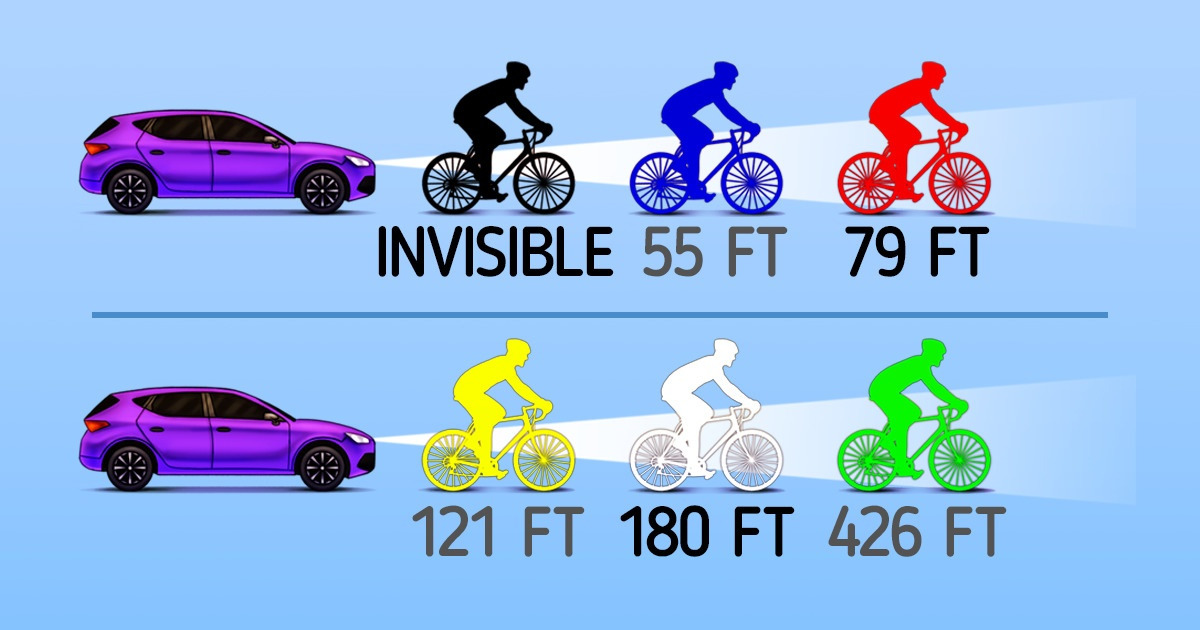
Riding a bicycle not only allows you to save money on other means of transportation, but it can also bring multiple benefits to your health, such as strengthening your legs and keeping you in shape. However, there are certain things you should consider to be as safe as possible whenever you hit the road on your 2-wheeled vehicle.
5-Minute Crafts will show you some valuable tips to help you make the most out of your bike rides.
❗Important: This article has been created for informative purposes only and does not replace professional or legal advice. Remember to always check local traffic laws for bicycle riders before going on the road.
1. Check your bike and gear before riding.
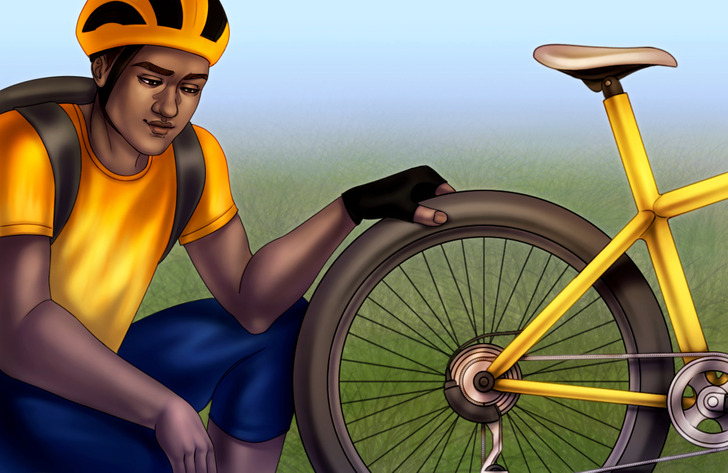
Since malfunction in your equipment could lead to accidents, it’s important to ensure that everything is in good condition before riding your bike. Therefore, always remember to:
2. Don’t forget your helmet.
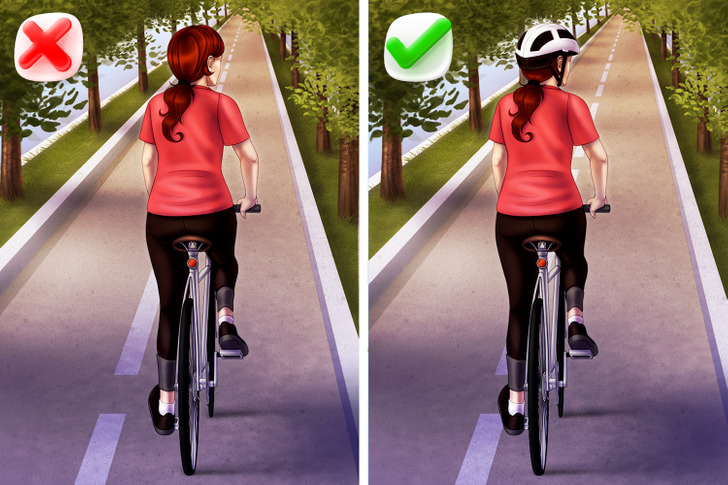
Even if you want to take a short trip, wearing a helmet is crucial for a safer ride. Moreover, it’s important to make sure that it fits properly.
First of all, find the right size for you according to the circumference of your head. To do so, run a tape measure along the largest area of your head, around 1 inch above the eyebrows. When you get the number, look at the following parameters to know your size:
- Extra-small: below 20 inches (51 cm)
- Small: 20 inches to 21.75 inches (51 cm to 55 cm)
- Medium: 21.75 inches to 23.25 inches (55 cm to 59 cm)
- Large: 23.25 inches to 24.75 inches (59 cm to 63 cm)
- Extra-large: above 24.75 inches (63 cm)
- One size fits all: it can be adjusted.
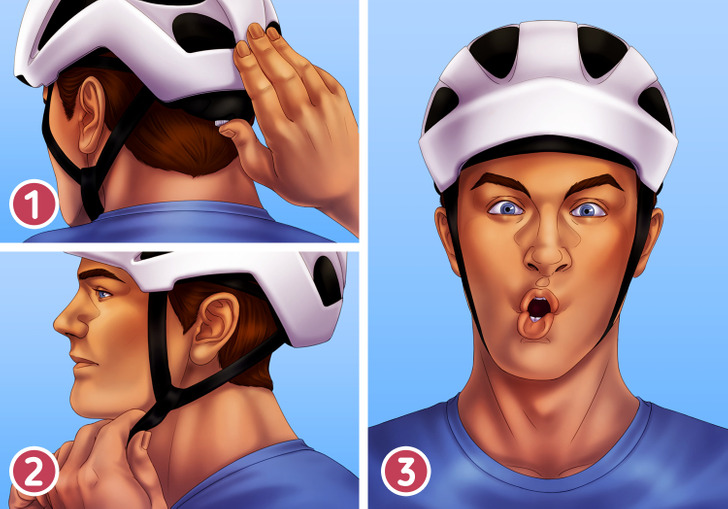
After you find the right helmet for you, adjust it properly by following these steps:
- Adapt the tightness until you get a snug fit. You can do it by twisting the adjustment wheel on the back of your helmet or by changing the foam pads in the interior. This can vary according to the type of helmet you own.
- Buckle and adjust the strap under your chin. The strap should be tightened and form a comfortable V shape under the ears. If this doesn’t happen, adapt the buckles under your ears until you get the proper fit.
- Open your mouth widely after the chin strap has been buckled. When doing so, you should feel the pressure of the helmet against the top part of your head. Adjust the strap to tighten it up a little more and repeat if necessary.
3. Use reflective equipment.
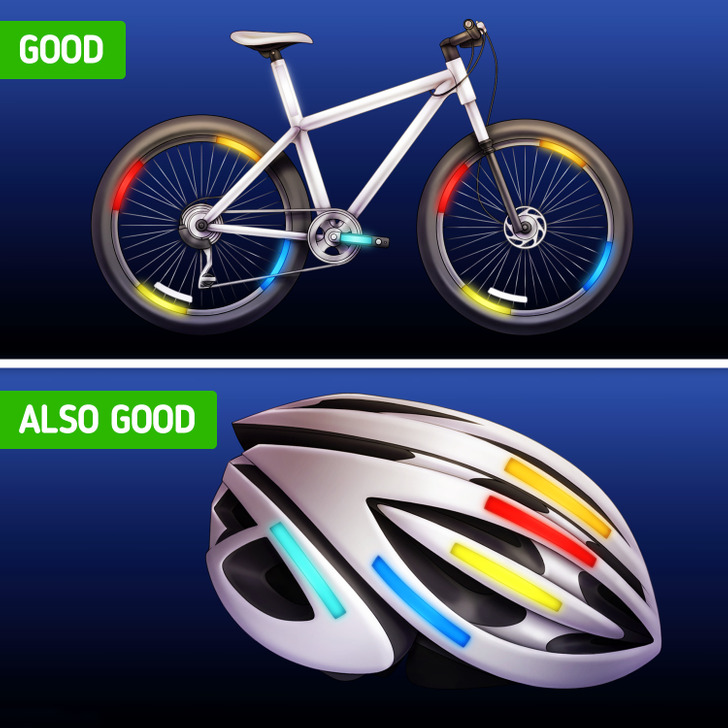
Limited visibility can be another cause of accidents, especially at intersections where you’re likely to cross paths with a driver.
Therefore, equip your bike and helmet with reflective elements and wear reflective clothing that is bright enough to enhance your visibility. This is particularly advisable during early mornings, cloudy days, and nights.
✅ Always use reflectors and front and rear lights on your bike when riding in dark or low-light conditions. Keep in mind that this could be a requirement established by law in some places.
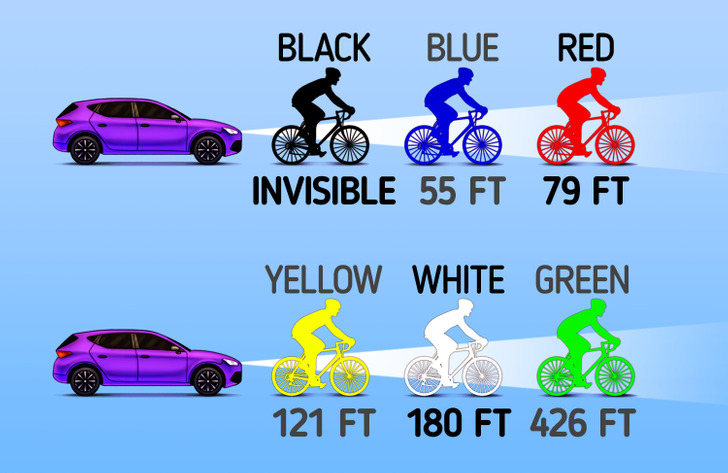
4. Travel with the flow of traffic and at a safe speed.
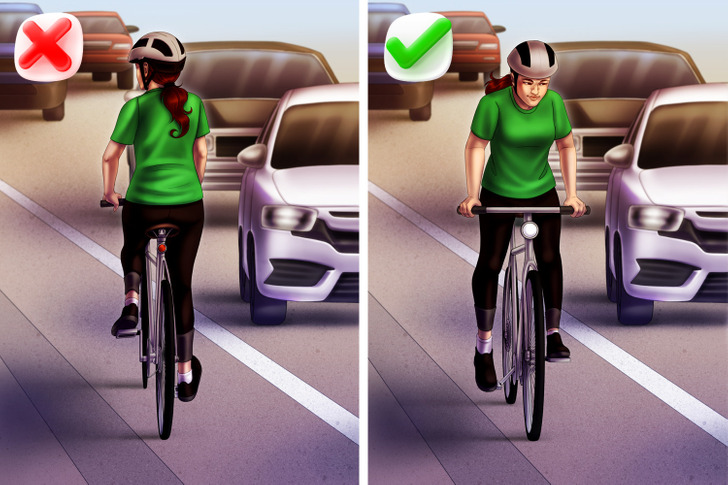
Going against the other vehicles can lead to a higher chance of having an accident. Therefore, make sure to ride your bike in the same direction as traffic.
Moreover, it’s essential to keep a safe speed at all times so that you can react quickly in unexpected situations.
✅ Remember that when riding your bike, it’s advisable to behave just like a vehicle driver, which means that you should follow the rules of the road, such as stopping at traffic lights and signs and yielding to pedestrians and other vehicles.
🚫 Don’t ride too close to the pavement edge as you may not be able to move further if necessary. Instead, keep a distance from the curb that feels comfortable enough.
5. Remember that eye contact may not be enough.
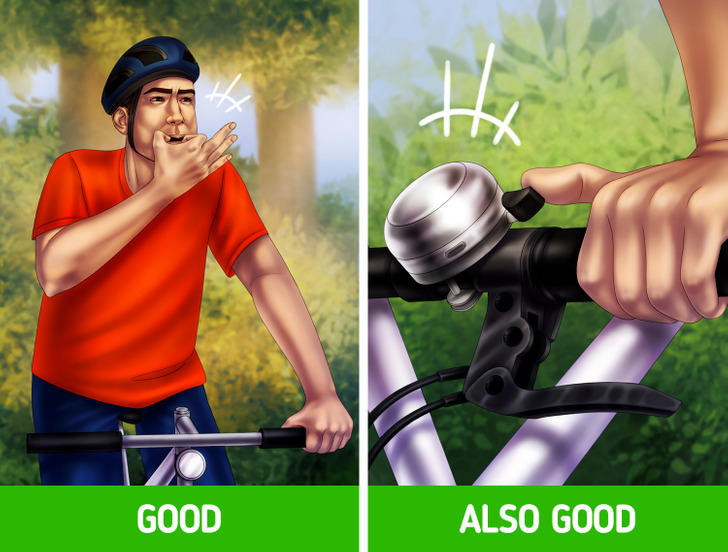
Even though eye contact can be pretty helpful to make yourself understood by drivers, sometimes it may be difficult to tell where they’re looking.
Therefore, it’s crucial to observe their overall behavior and use other techniques to get their attention when necessary. To do so, you can yell, wave your arm, whistle, or ring a bell if you have one.
6. Use signals that drivers can easily understand.
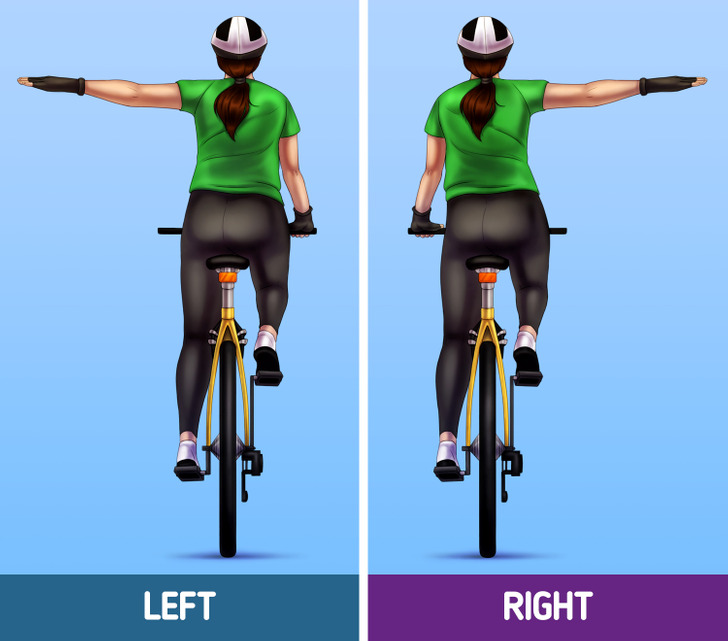
7. Put your electronics away.
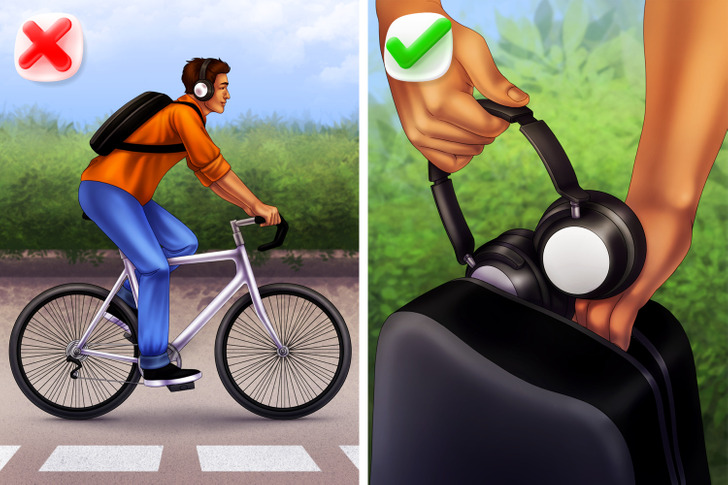
Putting all your devices in your pocket or a bag can help you minimize distractions and, therefore, reduce the risk of accidents. Remember to always be aware of your surroundings and keep your eyes on the path. If you need to carry a water bottle, choose one that you can easily use with only one hand.
At the same time, it’s important to keep in mind that wearing headphones can also be a dangerous thing to do. Music at a loud volume can prevent you from staying focused on what’s going on around you and, as a consequence, you may not be able to react to warning signals, such as sirens and honking.